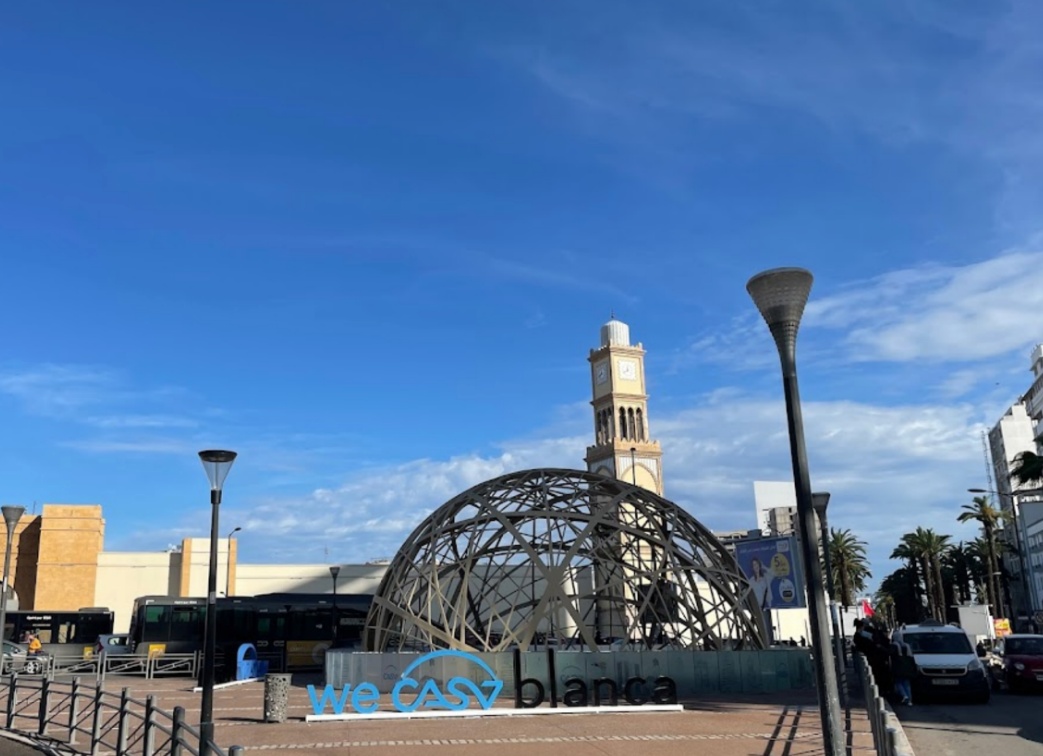United Nations Square: A Cultural Crossroads in the Heart of Casablanca
Table of Contents
Introduction
United Nations Square, situated at the heart of Casablanca, Morocco, is not only a pivotal point of urban convergence but also a symbol of the city’s cosmopolitan legacy. Serving as a vital junction for Casablanca’s major avenues, including the bustling Mohammed V Boulevard, this square is a nexus of cultural, economic, and social activity. It integrates the modern pulse of the city with historical narratives, embodying the diverse influences that have shaped Morocco’s largest city over the decades.
Historical Context
The establishment of United Nations Square in the 20th century marked a significant urban development phase for Casablanca. Originally designed during the French Protectorate era as part of a broader plan to modernize the city, the square has evolved through the years to reflect the dynamic changes within the urban landscape. Once a simple intersection, it has grown into a complex urban plaza that witnesses the daily ebb and flow of thousands of residents and visitors.
Architectural Significance
United Nations Square showcases a blend of architectural styles that reflect both the colonial past and the independent future of Morocco. Surrounding the square are examples of Art Deco buildings, interspersed with modernist and contemporary structures. This architectural diversity highlights the square’s role as a microcosm of Casablanca’s architectural evolution. The centerpiece of the square is a large modernist clock tower, a landmark that has become a popular meeting point and a symbol of the city’s continual progress.
Economic and Social Hub
United Nations Square serves as a crucial economic hub, lined with banks, shops, hotels, and cafes. It is a place where business and leisure intersect, accommodating the needs of local commuters, shoppers, and international tourists. The square’s proximity to the Port of Casablanca, one of the largest artificial ports in the world, further enhances its significance as a center of commerce.
Cultural and Public Space
Art and Performances
The square often hosts various cultural events and performances, including live music, art installations, and public exhibitions. These events reflect Casablanca’s vibrant cultural scene and provide a platform for local artists to showcase their work.
Public Gatherings
As a space of public congregation, United Nations Square has also played host to significant political and social gatherings over the years. It has been a site for celebrations, protests, and other expressions of public sentiment, mirroring the political pulse of the nation.
Urban Development and Public Transport
The square is a major node in Casablanca’s urban transport network, featuring tram lines that connect different parts of the city. This integration has made United Nations Square a transit-oriented development area, promoting easy access and encouraging public transport usage among residents and visitors. The tram system not only enhances mobility but also contributes to reducing the city’s carbon footprint, supporting sustainable urban development.
Green Spaces and Accessibility
Recent renovations have focused on improving pedestrian accessibility and enhancing the aesthetic appeal of the square. New seating areas, improved lighting, and landscaped green spaces have transformed United Nations Square into a more welcoming environment for all. These updates have prioritized pedestrian pathways and greenery, making the square a more enjoyable place for leisure and relaxation amidst the urban hustle.
Challenges and Future Prospects
Maintaining such a dynamic urban space presents ongoing challenges, including congestion, maintenance of public infrastructure, and balancing commercial development with public interest. Future plans for United Nations Square involve further enhancements to its usability and sustainability, ensuring that it remains a central part of Casablanca’s urban fabric.
Visiting United Nations Square
Visitors to Casablanca should not miss experiencing United Nations Square. It is accessible by tram, taxi, or on foot from many parts of the city. Tourists can enjoy the square’s vibrant atmosphere, explore the surrounding shops and cafes, or simply sit and watch the flurry of activity that defines daily life in Casablanca.
Conclusion
United Nations Square is more than just a physical space; it is a living symbol of Casablanca’s identity as a melting pot of cultures, histories, and aspirations. It embodies the spirit of the city — dynamic, diverse, and forward-looking. For anyone looking to understand the essence of Casablanca, a visit to United Nations Square offers a window into the soul of this bustling metropolis.
Additional Resources
To further enrich your exploration of Casablanca, consider visiting the iconic Hassan II Mosque and the Church of Notre Dame de Lourdes. The Hassan II Mosque, one of the largest mosques in the world, offers breathtaking architecture with its towering minaret and location right on the Atlantic coast. Meanwhile, the Church of Notre Dame de Lourdes features stunning modern stained glass that illuminates its interior, providing a contrast to the traditional Moroccan architecture. Both sites are significant in their own right, offering visitors a deeper appreciation of Casablanca‘s religious and architectural diversity.




Church Of Notre Dame De Lourdes: A Beacon Of Modernism In Casablanca - Private Driver Morocco
[…] a broader exploration of Casablanca’s urban and cultural landscape, consider visiting United Nations Square and Rick’s Café. United Nations Square is a bustling hub that showcases Casablanca’s […]